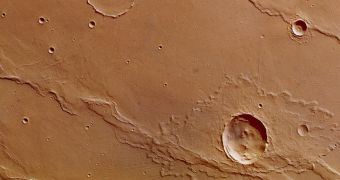A new observations campaign conducted by the European Space Agency's (ESA) Mars Express orbiter has revealed a wide array of tectonic features and impact markings on the surface of the Red Planet. The place targeted by the research is located to the south of the famous Valles Marineris.
ESA has been operating the Martian spacecraft since launch occurred, on June 2, 2003. By December 25, the vehicle had achieved orbital insertion around Mars and began commissioning procedures.
Since that time, it has managed to produce a wealth of data on the Red Planet, surveying its surface, its atmosphere, and relaying signals recovered from rovers and other orbiters back to Earth. The contribution this vehicle has made to understanding our neighboring world is invaluable, experts say.
During its latest study, it was focused on Melas Dorsa, a region of Mars located just to the south of Valles Marineris. The data-collecting phase of the campaign began on April 17, and concluded several days later. This region is located amidst volcanic highlands.
Its proximity to the famous Valles, which is known to be a very large Martian rift system, suggests that tectonic forces and geological process connected to the activity of the planet's inner core may have had something to do with its formation.
Only 250 kilometers (155 miles) separate Melas Dorsa from Melas Chasma, which is a part of Valles Marineris. Mars Express photographed all these structures using its high-resolution stereo camera (HRSC) instrument.
The wrinkle ridges, unusual intersecting faults and the elliptical crater imaged in the region all contribute to the interest that planetary scientists show in how Melas Dorsa formed. Learning more about its rich history could contribute to furthering our understanding of how the Red Planet evolved.
“Elliptical craters like this 16 km-wide example are formed when asteroids or comets strike the surface of the planet at a shallow angle,” an ESA press statement reports.
“Scientists have suggested that a fluidized ejecta pattern indicates the presence of subsurface ice which melted during the impact. Subsequent impacts have created a number of smaller craters in the ejecta blanket,” the release adds.

 14 DAY TRIAL //
14 DAY TRIAL //